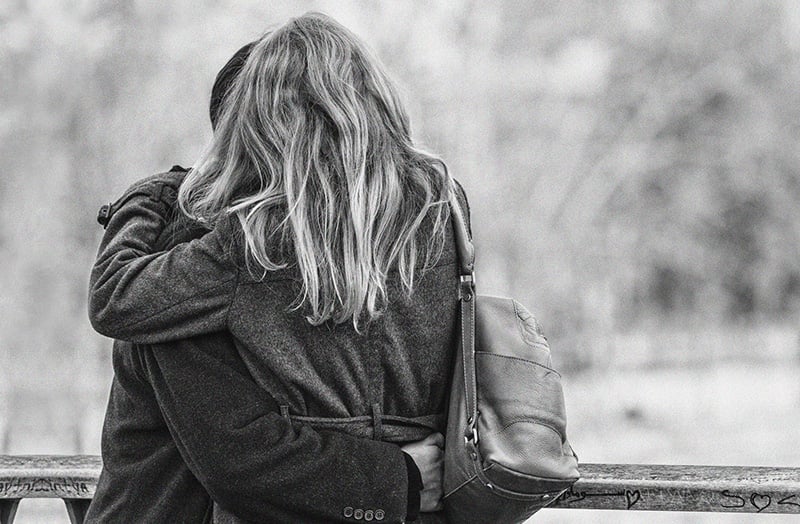
This is a written version of the opening to today’s Call with the Publisher, which is held every Friday. Want to join? Become a member, or Support us on Patreon.
Lisa Hickey: Hi everyone! I’m Lisa Hickey, hosting today’s Call with the Publisher with our community. And today we are going to be answering the question: “But, what can we do?”
We say something on The Good Men Project that has become almost cliche “The world is changing so fast that most people can no longer process that change.” And we have been saying this for years — long before the world was *actually* changing this fast. I mean, remember when the biggest change in the world seemed to be new technology coming out that we couldn’t keep up with? It was like “oh-boy, look at the new camera in Apple’s iPhone!” Now think of how inconsequential that seems!
And now we have to learn things like the difference between delta variants and lambda variants. We have to get used to calling people by their correct pronouns and embracing gender fluidity. We need to understand what a heat dome is and why they are not going away. And we have to make a conscious decision about whether to ride the subway when it’s been raining for 4 days straight. And firenados. And social issues that we used to care deeply about may not seem so important in the face of existential threats our world is facing now.
So when we think about how the world is changing — a lot of it is big, scary things that seem completely out of our control. This ain’t a Hollywood Movie where I can pull out my lightsaber and singlehandedly fight off a firenado. Not gonna happen.
And so the question of what can WE do is really the question of our times, right?
On Wednesday I gave a class — one of our classes that is free for Premium Members and Patreon Supporters.
And the class was on “How to Create Social Change”. And after the class, almost everyone who attended took the time to email to tell me how much they learned from it, and wanted to follow up on some of what was discussed. Which I thought was really good.
And I want to take you through just 3 slides from that presentation. And those slides are also a part of our Diversity, Equity & Inclusion workshops that we are running holding for corporations and educational institutions.
This particular section is about racism, but I will also show how it can be used for any social problem.
On the first slide is an equation that says “racism = bigotry + power“.

So it is not JUST about individual prejudice. It is not just about “those racist people”. It is about individual prejudice, ie, bigotry PLUS power.
And what I mean by power is this. Power is control of our institutions and resources. control of our educational system. control of our government. control of corporations, or control of our financial systems or housing systems. Power looks like a lot of different things, but we’re talking here about control of resources. Resources that would allow a great many people to live better lives if they were distributed equally.
You may think that going up against big corporations or governments or universities is equivalent to pulling out your light saber and battling a firenado. I get it — it seems overwhelming. But we have to change both, we have to change both the individual bigotry and our systems that create abuses and unequal distribution of resources.
If you want to create social change — you can decide *where* you want to create change. But don’t dismiss people who are trying to create change in ways you aren’t. Sometimes people will get on these calls and say “It’s got to start with US as individuals, talking to people who have different views.” And the truth is — that might be part of the solution. But does it HAVE to start with that? Is that the only approach we should take? Absolutely not.
Start somewhere, start anywhere.
The second slide is a graphic from Washington University School of Medicine in St. Louis.

And it shows an individual journey to becoming “anti-racist”. Not just not racist, but truly anti-racist — someone who fights against white supremacy in their daily life.
Let me read you some examples from this.
Now — think about how that might work for other social problems.
Say you care about climate change.
Maybe you started in the fear zone. Maybe you were one of the people who used to joke “we just got 5 feet of snow, where is that global warming when you need it? Maybe you aren’t asking the hard questions because it seems so overwhelming, and then you might feel guilty for not doing enough. So you just try to hide from climate change. (spoiler alert, you aren’t going to be able to hide for long). Maybe you hang out with people who don’t want to talk about climate change because then you don’t have to talk about it either.
And then you go into the learning zone. You seek out the questions that make you uncomfortable–questions about wildfires and floods and storms and drought. You educate yourself on solutions that are working. You look for chances to connect with people who are talking about climate change and the existential threat it causes.
And then you go into the growth zone. You start weaving your discussions into everyday conversations so you can educate others. You promote and advocate for policies that would get us to carbon neutrality. You start to understand how you unwittingly benefit from things that are harming the environment—plastics, for example. Or meat. Or fossil fuels. Or just buying stuff, especially stuff that needs to be shipped into your locale. You don’t let your past mistakes stop you from future action.

Now we get into how deeply these problems are embedded into our culture.
On the third slide is a photo of someone wearing a t-shirt. And the t-shirt says “Racism is so American that when you protest it, people think you are protesting America.” I believe that was in direct reference to Colin Kapernick kneeling at football games. But it could also be used to describe pushback to teaching correct history in our schools, or taking down confederate flags and monuments, to changing names of sports teams. (Our SoundCloud recording of this topic is one of our most listened-to recordings)
And again, you could use this example to show how deeply the abuse of our environment is steeped in our culture. The way we advertise and market bottles of liquids in plastic bottles — not just water, but sodas and sports drinks and “healthy alternatives” wrapped in plastic. Halloween—don’t spoil it for the kids even though that holiday alone produces enormous amounts of waste. Or the American Dream—the idea that if you work hard enough you’ll be able to have a house in the suburbs and fill it with stuff. Did you know, for example, that the average American family owns over 250,000 possessions? A quarter of a million pieces of “stuff”, which eventually have to be disposed of somehow? And multiply that by households everywhere…it’s mind-boggling.
Ok, we’re going to open it up to our community now. Please listen to the recording to hear where the call went from here.
PUBLISHERS NOTE: On today’s call were community members Jed Diamond, Carol Bluestein, Ruben Mauricio, Theresa Jordan, Craig McClay and Michale Missasi. Carol co-hosts our Thursday call “Climate Change by the Elements”.
On the community discussion portion of the call, several callers mentioned resources that helped them frame some of these difficult issues. Here are links to those resources:
Andrea Smith on The Three Pillars of White Supremacy
Critical Race Theory by Delgado and Stefanfcic
A Case for Reparations by Ta Nehisi Coates
Rebecca Costa on The Watchman’s Rattle: A Radical New Theory of Collapse
TEDTalk by Jay Smooth: How I Learned to Stop Worrying and Love Discussing Race
Listen to other recordings of Good Men Project Live Calls on our SoundCloud Channel.
***
You Might Also Like These From The Good Men Project
 Compliments Men Want to Hear More Often Compliments Men Want to Hear More Often |
 Relationships Aren’t Easy, But They’re Worth It Relationships Aren’t Easy, But They’re Worth It |
 The One Thing Men Want More Than Sex The One Thing Men Want More Than Sex |
 ..A Man’s Kiss Tells You Everything ..A Man’s Kiss Tells You Everything |
Join The Good Men Project as a Premium Member today.
All Premium Members get to view The Good Men Project with NO ADS.
A $50 annual membership gives you an all access pass. You can be a part of every call, group, class and community.
A $25 annual membership gives you access to one class, one Social Interest group and our online communities.
A $12 annual membership gives you access to our Friday calls with the publisher, our online community.
Register New Account
Log in if you wish to renew an existing subscription.
Need more info? A complete list of benefits is here.
—
Photo credit: iStock
The post Answering the Question: “But, What Can We Do?” [Live Recording] appeared first on The Good Men Project.
